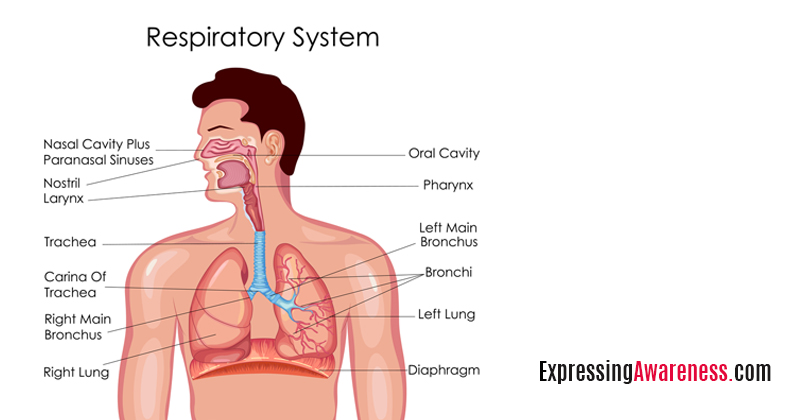 Respiratory System Anatomy
Respiratory System Anatomy
Breathing muscles and the respiratory system help the body exchange gases between air and blood and between the blood and its billions of cells via the air passages, pulmonary veins, and lungs. Only the alveoli and the alveolar ducts are responsible for gas exchange in the respiratory system, including most of the respiratory system’s organs.
The respiratory system does more than move air around and exchange gases; it cleans, heats, and humidifies it. Respiratory system organs also influence smell and voice.
It is also through the respiratory system that a healthy internal environment can be maintained, known as homeostasis.
There are two major parts to the respiratory system:
Upper Respiratory Tract
Upper respiratory tract organs are located above the chest cavity, and they include your larynx (voice box), the pharynx (mouth), and the nose (nose).
Nasal Cavity: Small hairs called cilia transport dust particles to the nasal cavity, where they are sneezed or blown out by the sticky mucous membrane lining the nasal cavity.
The sinuses: These air-filled areas next to the nose contribute to the reduced weight of the skull.
The Pharynx: In the pharynx, both food and air are taken into the body and sent to their proper destinations. Speech is also affected by the pharynx.
The Larynx: Human speech relies on the larynx located in the throat.
Lower Respiratory Tract
The trachea, lungs, and bronchial tree (including alveoli) are all components of the lower respiratory system housed within the chest cavity.
Trachea: An airway to the lungs, the trachea, is located directly below the larynx and is the primary airway.
Lungs: The lungs make up the largest organ in the human body. Inhaling oxygen and expelling carbon dioxide is the job of the lungs.
Bronchi: Each lung’s air supply system is made up of a network of passageways called the bronchi, which branch out from the trachea.
Diaphragm: The diaphragm, the primary respiratory muscle, contracts and relaxes to enable air into the lungs.

 Respiratory System Anatomy
Respiratory System Anatomy




